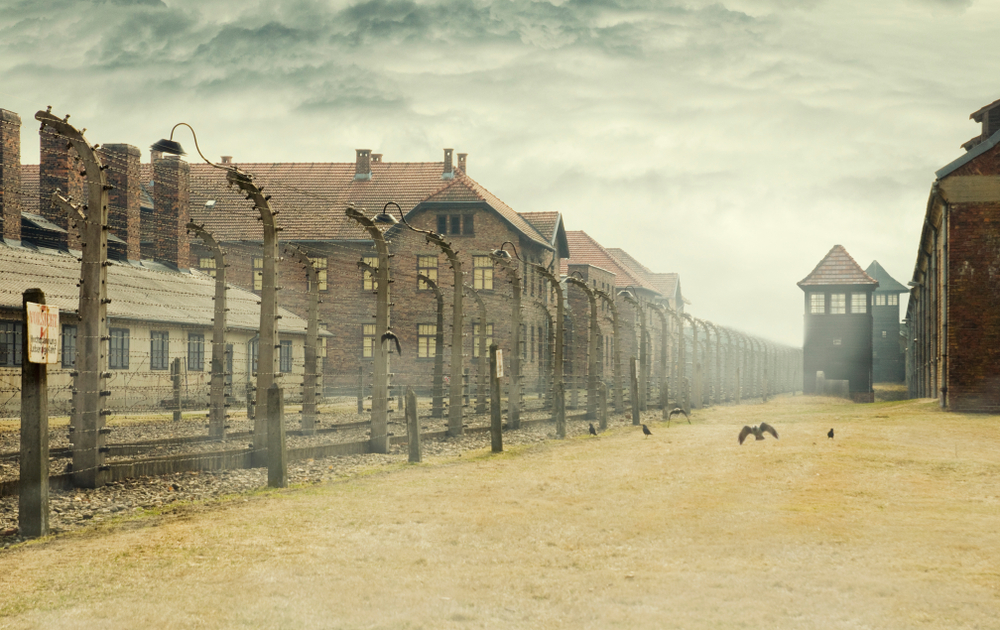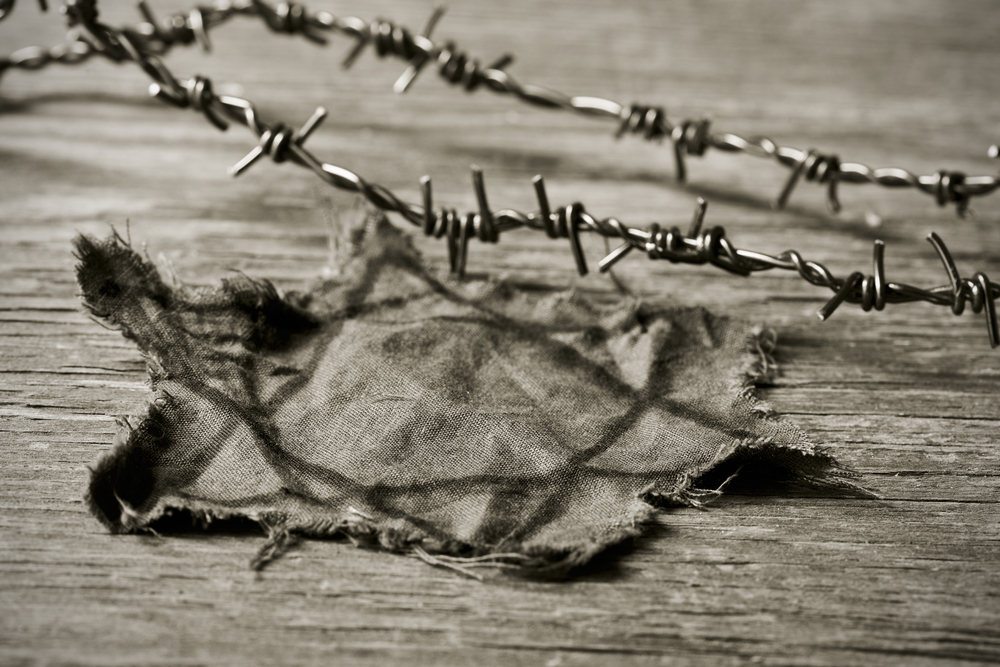Ken Burns Unmasks the Opposite of Love—Indifference—In Scathing Magnum Opus, The U.S. and the Holocaust
Adolf Hitler was happy. The news from America—coming as it did in the spring of 1924 while the future Fuhrer was still behind bars for a failed coup the year prior—could not have been better timed. U.S. Congress had overwhelmingly approved and signed into law an act that effectively barred most immigrants from entering its borders save for those coming from Aryan-majority countries. The U.S., to Hitler’s mind, was smartly laying out the blueprint for a Nordic-Germanic society, free of undesirables from other races—the Asian, the Black, the Jew, to name a few.

This revelation and many others—disturbing but vital to our understanding of the predisposition, precipitation and prolongation of the Holocaust—are spotlighted and brilliantly presented in documentarian Ken Burns’s three-part masterpiece, The U.S. and the Holocaust, released this past September, but become even more timely and important in light of the Anti-Defamation League’s recent and damning report on the state of antisemitism in America today: Hate crimes against Jews are at their highest levels in decades, the flames of bigotry fanned in large part by its normalization through those with a broad media platform—celebrities, social media stars and public officials.
That the currents of antisemitism and white supremacy also ran deep in early 20th-century America is not new knowledge, but what many don’t know is that the Nazi party playbook borrowed knowingly and extensively from America’s systematic slaughter and removal of its native peoples, concentrating them into reservations (“cages,” as Hitler called them). And just as America had conquered its Wild West, Hitler hoped to conquer the “wild east” of Europe and Russia, populated as he perceived it was, with savages just like the American Wild West. “Their Mississippi is our Volga,” Hitler wrote in prison.
As of a 1938 poll, two-thirds of Americans feel the persecution “has been partly or entirely the Jews’ own fault.”
Hitler, too, was inspired by the American South’s Jim Crow laws against Blacks, the lynchings and the denial of rights and personhood to that segment of its population. Small wonder his delight at America’s passage of the Immigration Act of 1924.
Burns skillfully weaves documentary footage and audio, along with commentary from distinguished historians such as Professor Deborah Lipstadt, Emory University professor and U.S. Special Envoy to Monitor and Combat Antisemitism, and from survivors and witnesses—including a childhood friend and neighbor of Anne Frank—to put together what commentator Jeffrey Salkin called a “shofar blast” indictment not of America’s complicity in the worst man-made catastrophe in history, but of its knowing and sometimes calculated inaction in the face of it.
Part One, “The Golden Door,” covers “beginnings” to the dawn of World War II in 1938. America’s open borders at the end of the 19th and beginning of the 20th centuries allowed millions of immigrants into Emma Lazarus’s Golden Door, but then a pushback happened, fueled by nativistic fears that the newcomers would outbreed, outnumber and ultimately replace “real” Americans. The fashionable but preposterous pseudoscience of eugenics taught that character, morality, intelligence, industry and other intangibles are racially inherent and that “undesirables” should be sterilized for the greater good of humanity. That “logic” was subscribed to and promoted by such luminaries as Theodore Roosevelt, Helen Keller, Margaret Sanger, Alexander Graham Bell, Henry Ford and Charles Lindbergh. John D. Rockefeller and Andrew Carnegie bankrolled courses on eugenics in major universities.
The Golden Door was left open, but just a crack.

Part Two, “Yearning to Breathe Free,” covers 1938 to 1942. By this time, Americans cannot say they were not well-informed of German oppression of the Jews, but as of a 1938 poll, two-thirds of Americans feel the persecution “has been partly or entirely the Jews’ own fault.” Thirty million tuned in regularly to listen to radio preacher Father Charles Coughlin warn that Jews were after their jobs and to let more Jewish refugees in would mean even more unemployment. He, as well as Lindbergh—decorated personally by Hermann Göring with the Service Cross of the German Eagle in 1938—openly admired the Nazis of Germany and the Fascists of Italy, with Lindbergh advocating against aiding the Allies in any way. Meanwhile the pleas of tens of thousands of Jews and others begging for asylum were met by deaf ears from an openly antisemitic State Department.
Burns knows there’s no need to spoon-feed any reaction to the viewer; we are granted the space to feel any outrage, horror and disbelief completely on our own.
Part Three, “The Homeless, Tempest-Tossed,” chronicles the years from 1942 to the end of the war and the ensuing years thereafter almost to the present. Assistant Secretary of State Breckinridge Long obstructed any refugee aid or rescue, testifying in Congress at one point for four hours against it. He succeeded until FDR’s Treasury Secretary Henry Morgenthau Jr., a Jew, discovered the State Department’s years-long suppression of information of Hitler’s plans and actions. And yet in a 1945 poll taken after the full horror of the Holocaust had been exposed, 95 percent of Americans opposed the lifting of immigration quotas to allow more refugees, with one-third saying the number should be fewer.
In 1943, The Nation’s editor-in-chief Freda Kirchwey summarized America’s indifference: “We had it in our power to rescue this doomed people and we did not lift a hand to do it—or perhaps it would be fairer to say that we lifted just one cautious hand, encased in a tight-fitting glove of quotas and visas and affidavits, and a thick layer of prejudice.”
The U.S. and the Holocaust is Ken Burns’s magnum opus. With spare narration written by Geoffrey C. Ward, it is yet unsparing in its demands that we follow the journey of hate and indifference to its catastrophic end. Burns knows there’s no need to spoon-feed any reaction to the viewer; we are granted the space to feel any outrage, horror and disbelief completely on our own.
Possibly enough generations had to pass before such an undertaking could be done. Possibly enough years had to accumulate enough distance between our time and that time to prevent the sheer enormity of the Holocaust to be eclipsed by its unbelievability. As one survivor put it, “As it was happening to us, we couldn’t believe it. And if we couldn’t believe it, how will anyone else believe it?”
We like to think of ourselves as Americans, the force for good in the world. In our better days we, indeed, are and as Ken Burns makes crystal clear, there was no shortage of heroes—American and European, Jew and non-Jew, who saved many lives during that black time.
But still, the currents of hate run deep and continue to. Professor Lipstadt observes in the film, “It’s easy to imagine that after the opening of the camps and some of the stories that came out, that people would realize that this is the legacy of antisemitism, and they’d banish it and it’s gone, it’s over, it’s finished. But that’s not what happens.”
The montage of recent events added at the end of Part Three—from Charlottesville’s “Unite the Right” to the Tree of Life Massacre in Pittsburgh—testify to the truth of Professor Lipstadt’s words: “But that’s not what happens.”
On a late-night talk show, Burns is asked by the host, “How does America rise above these nativist, dark, sometimes violent impulses?”
Burns answers, “You tell stories about it. You bring out the facts, you bring it to light … as difficult as it may be, as uncomfortable as it may be.”
Ken Burns has told the story. It is up to us to learn from it.










